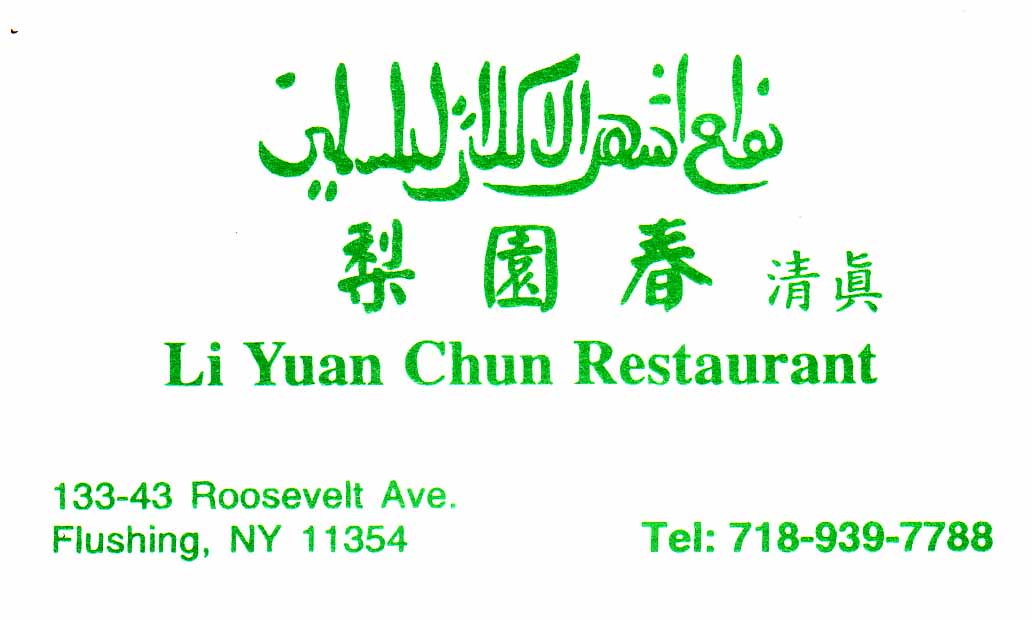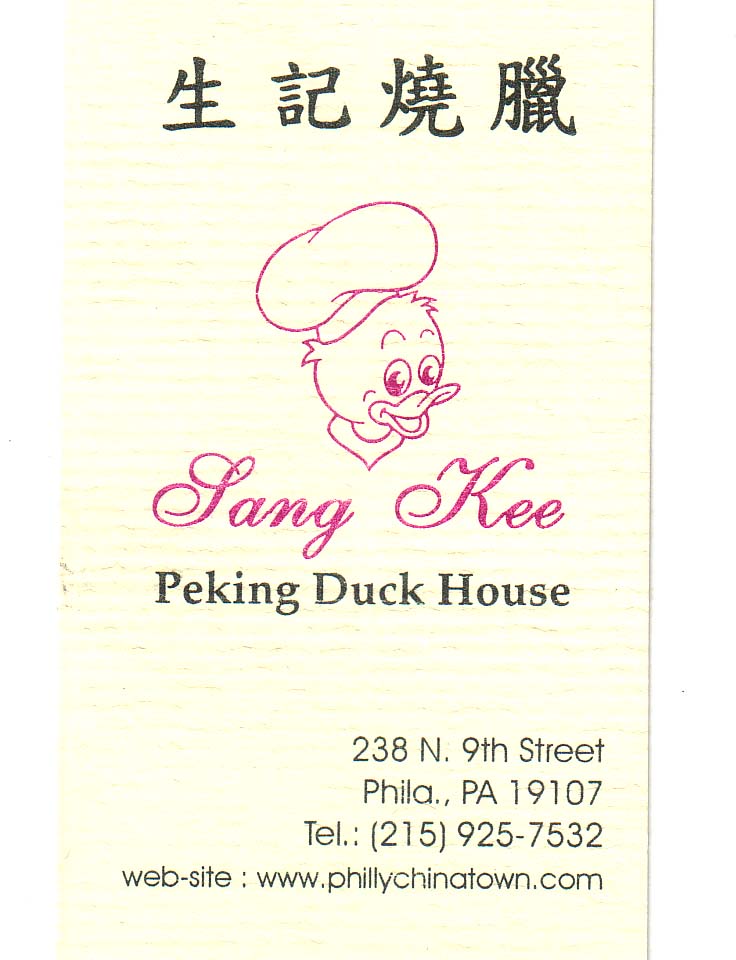
| What is Flavor and Fortune? |
| How do I subscribe? |
| How do I get past issues? |
| How do I advertise? |
| How do I contact the editor? |
Read 12876715 times
Connect me to:
| Home |
| Articles |
| Book reviews |
| Letters to the Editor |
| Newmans News and Notes |
| Recipes |
| Restaurant reviews |
| Article Index (all years, slow) |
| List of Article Years |
| Article Index (2025) |
| Article Index (last 2 years) |
| Things others say |
| Related Links |
| Log In... |
| Authors |
| Categories & Topics |
TOPICS INCLUDE: Seasonal foods; Roosters; Tripe Swatow-style: Book review rearrangements; Business cards; Fish maw: Distiller's grain; Bride and Groom keepsakes; Razor clam and tripe recipe
| by Jacqueline M. Newman |
Letters to the Editor
Summer Volume: 2005 Issue: 12(2) page(s): 6, 7, and 16
From ANGEL in BRONX, NY:
Thank you for your follow-up e-mail about seasonal foods.
ANGEL: We are pleased to accommodate you and the others who sent reminders. Please see all not yet discussed in the Newman’s News and Notes article in this issue on pages 27-28.
From SANDY via e-mail:
Was hoping that you would have an article about roosters and the New Year and in it would answer when they were domesticated. I guess, if it was considered, it gave way to the 100 Top Restaurants; which I did enjoy knowing about. Next year, hope I can get to that Expo where they were awarded; do you have those dates yet?
SANDY: We, too, hope you will come to that great event. And if you do, please seek us out and say hello. This year (2004) there was one ALL Asia Food Expo event, next year (2005) they advise that there will be two. One will be at the Javits Center in New York City and scheduled for September 12-15. We are advised that there will be another at the Los Angeles Convention Center October 9-11. More information should be available at www.allasiafood.com check it out. And, as to your other comment, would that we could accommodate every request, most of them terrific, yours included. This Year of the Rooster, which began on February 9th, honors an animal said to have been domesticated at least by 4000 BCE. Chickens spread north to central China where they were not native. However, chicken bones have been found in several central and more northern Chinese Neolithic sites. This animal is honored as one of the animals that came to Buddha, that is why there is a Year of the Rooster. And no, it is not the black chicken, as you asked. The meat of that bird is primarily medicinal; and there was a short discussion of same in Flavor and Fortune’s Volume 10(2) on page 7. Chickens and roosters, in general, are restorative and said to be warming foods. With respect to your query, you inspired us to put a picture of domesticated chickens and roosters on the cover of the hard copy. It is from our Chinese copy of the dietary medical manual of the Mongol era, translated as Soup of the Qan. That book speaks of red, white, and black rooster meat and the yellow and black meat of hens; as well as the meat of several other types of poultry. We have done articles about ducks in Volume 9(1) on pages 9 and 10; and Volume 12(1) on pages 17-19 and 32; and the last issue did have a duck on its cover. Maybe one on chickens is in order in an upcoming issue.
From MARTHA, via e-mail:,
Why did you call the tripe recipe in the last issue 'Swatow Style?'
MARTHA That is a very good question, one we should have explained but did not, let us do so here. Some recipes do not use Pinyin spelling for a reason. They use a particular title or word to show, for instance, that the recipe is an old one. Calling something Peking Style, instead of Beijing Style, is an illustration of this. Such was the case with the recipe called Tripe Swatow Style that appeared on page 6 in Flavor and Fortune’s Volume 12(1). Swatow is now written as Shantou, two names for one city in the southeastern part of the Guangdong province. This is a port city on the China Sea in the Han River delta. Chiu Chow cuisine originated in this region. In older literature, the food from here has been called Swatow food. The stuffed tripe recipe is from a several hundred year old Chinese cookbook. They called it Tripe Swatow Style, we did too, to honor its origins. We could have called it Tripe Shantou Style, but wanted to show allegiance to both origins and earlier times.
From ANNE MARIE in VANCOUVER, CANADA:
Noted the recipe for one of the book reviews relocated to directly after that particular review and not after all the book reviews. Thanks for that, made it easy to identify which book it came from.
ANNE MARIE: Many, before your thanks, advised unhappiness with the location of recipes distanced from books reviewed. Thanks to them, the recipes were relocated to appear directly after the review. That may continue in future issues; and as book reviews are separate entities on the web, that is not an issue here. A few folks suggested we rename a recipe Martin Yan’s Ponzu Sauce, instead of the way it appeared in Volume 12(1) on page 25, where it was just called Ponzu Sauce. Hope in cases where there are many recipes from many books, the relocation removes questions as to which recipe belongs to which book. In this issue, only one book has recipes, so we put it after all of the reviews. We now await more input from you, our readers.
From CHARLEENA in NEW YORK CITY:
We have eaten at Li Yuan Chun, the Halal restaurant in Flushing, and do they have business cards? Any reason one was omitted from the article in the Volume 11(4) page 10 article? And while griping, on page five of that same issue, I tried to use the picture of the turtle with its Chinese character to buy one; the first chap trying to help me could not. The next fishmonger whose English was flawless, advised that the picture was great, the writing less so. Can you fix these types of flaws and omissions in future articles?
CHARLEENA: Thank you for calling both to our attention. We certainly will try to reach the flawlessness our readers demand, and rightly so. There were several cards missing in the previously mentioned issue, and others in the article about Philadelphia in the following one (Volume 12(1) on pages 11 and 12). Sometimes reviewers, myself included, forget to return with a business card. That was not the case for Philly as Harley Spiller did turn them in to us. The omissions were ours, not his, and we apologize to you, to him, and to all our readers. He did have a menu from the noodle restaurant called Lan Zhou, and cards from Sang Kee, the Peking Duck House, and the Cherry Street Kosher vegetarian restaurant. We will continue to keep in mind that you and others want these visuals




From MARY, via telephone:
Was challenged to learn from non-magazine sources just what fish maw was. I believe I looked it up early in the article of the same name that appeared in Volume 11(3) on pages 25-27.
MARY: Glad you did locate what it was, but do feel sorry for those with inadequate resources who were put to the same challenge. As was said, however, but not until the end of the sixth paragraph of the article, that fish maw is the stomach or air bladder of a large fish. Since writing that article, came across one by Ronghe Yu who says that fish maw usually comes from sharks and croakers. Never read that before or since. Readers, we can not verify that, can you?
From WARREN in MONTANA:
Can you advise if Fuzhou Distiller’s Grain, pictured, is the red wine lees you have written about?
WARREN: We thank you for the picture. We have reproduced it for you and others in the hard copy of this issue. Red wine lees is often sold as either distillers grain or Fuzhou fermented rice or any combination of those words. Fermented glutinous rice is most often sold as fermented white rice or as fermented sweet rice or something similar. A label for each of these fermented products are also provided in the hard copy of this issue. There are quite a few brands, we took one in our refrigerator and the one sent to us to picture here.
From LENORE L. in POTOMIC MD:
Learned quite lot about weddings and funeral in volumes 11(3) and 11(4) on pages 33-38 and 11-12 and 28, respectively. However, must confess that there are still unanswered questions. At the moment, what I really would like to know is: Are there any sweet keepsakes given to bride and groom?
LENORE: There are many definitions of the word keepsake so it is difficult to answer your question. One sweet item not mentioned as such in the wedding article is the use of star anise. Similar to many other things, the giving of this licorice-tasting and anise-smelling item has been used in many parts of China as gift to bride and groom. It is popular because it signifies many points of unity. It also stands for coming together on many levels. One or more whole eight-pointed stars are commonly gifted, and then kept by the couple. Because it is intended that the bridal couple keep this gift, it surely would qualify as a keepsake. For more information about this particular spice, we suggest you see Flavor and Fortune’s Volume 10(3) on pages 9 and 10. It was featured and illustrated there.
From ANDREA via e-mail:
Wonder if you know a recipe for razor clams and tripe, have searched ever so many Chinese books. I do remember eating it in a Manhattan restaurant; and loving it.
ANDREA: What could be bad? We searched, too, but to no avail until we spoke with some friends, both restauranteurs. Below are their combined suggestions. Enjoy!
| Razor Clams and Tripe in Black Bean Sauce |
|---|
6 dried Chinese black mushrooms 2 pounds honeycomb tripe 3 Tablespoons corn oil 2 onions, wedge-sliced, top to bottom 1 cup chicken stock 1 cup rice wine 5 Tablespoons dark soy sauce 2 Tablespoons Chinese black vinegar 2 Tablespoon Chinese maltose 5 Tablespoons Chinese black bean sauce with garlic 1 cup chopped fresh coriander 1 pound razor clams, shells removed 3 Tablespoons cornstarch mixed with same amount of cold water Preparation: 1. Soak mushrooms in warm water for one hour, drain and reserve the water. Remove their stems and quarter. 2. Wash and dry the tripe, cut into long thin strips one inch wide. 3. Heat oil and stir-fry the onions for two minutes, then add tripe and fry another two minutes. 4. Put mushrooms, onions, and tripe in heavy casserole. Stir well, then add stock, wine, soy sauce, vinegar, maltose, black bean sauce, and the reserved mushroom water, then stir again. Put the casserole into a pre-heated 350 degree F oven and cover the casserole. Cook for two hours, stirring every half hour or so. 5. Add coriander and razor clams, and the cornstarch mixture and cook another five minutes, then serve. |

Copyright © 1994-2025 by ISACC, all rights reserved
Address
3 Jefferson Ferry Drive
S. Setauket NY 11720